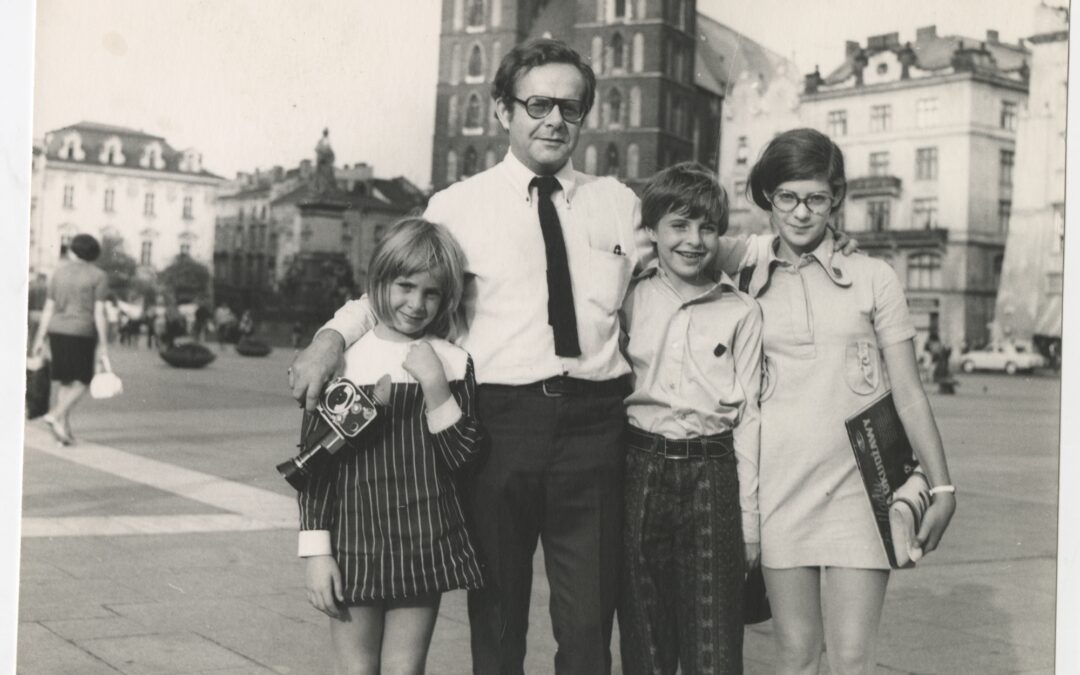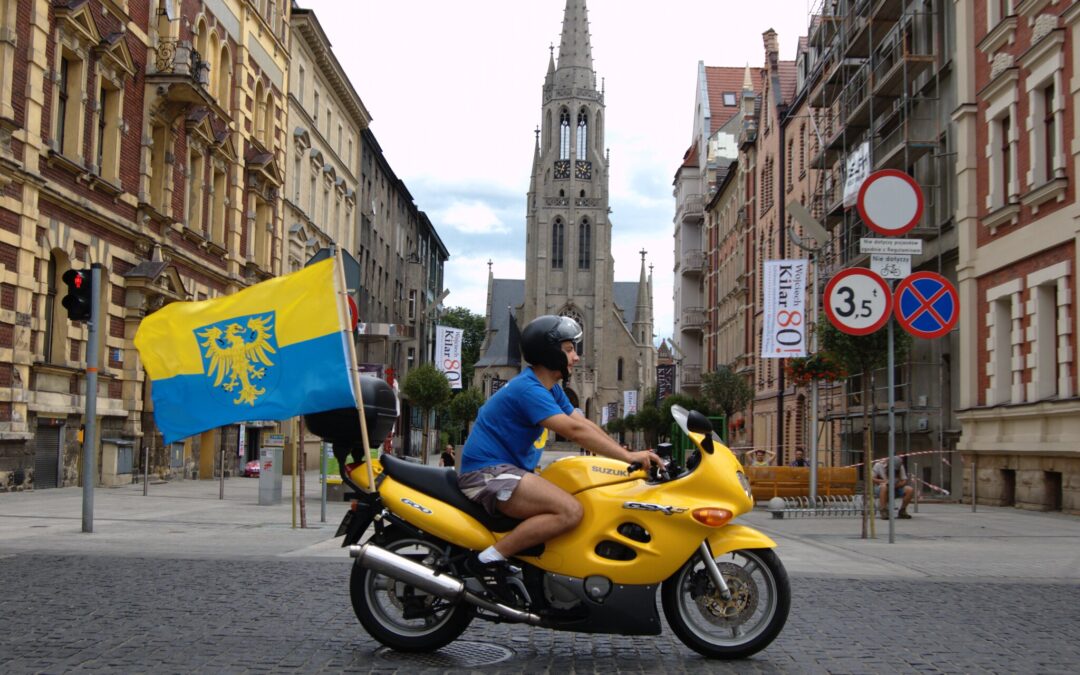By Agnieszka Wądołowska
Ryszard (Richard) Ores was the only member of his immediate family of Polish Jews to survive the Holocaust. Yet despite his experiences of the ghettos and camps in German-occupied Poland, he regularly returned after the war, regarding himself as a Pole until the end of his life. A new exhibition in Kraków presents his story.
Born to a prominent Kraków family, on his mother’s side Ryszard Ores had a number of rabbis as well as the owner of a factory that produced famous Krakowska sausage. His father’s family was well assimilated and his grandfather had served as a captain in the Austrian Imperial Army when Kraków was under Austrian rule.
Ryszard was 15, and dreaming of becoming a doctor, when the first German bombs fell on Kraków on 1 September 1939. His world would soon be upended. At that point around 56,000 Jews lived in Kraków, making up almost a quarter of the city’s population. By 1945, only around 4,000 remained.
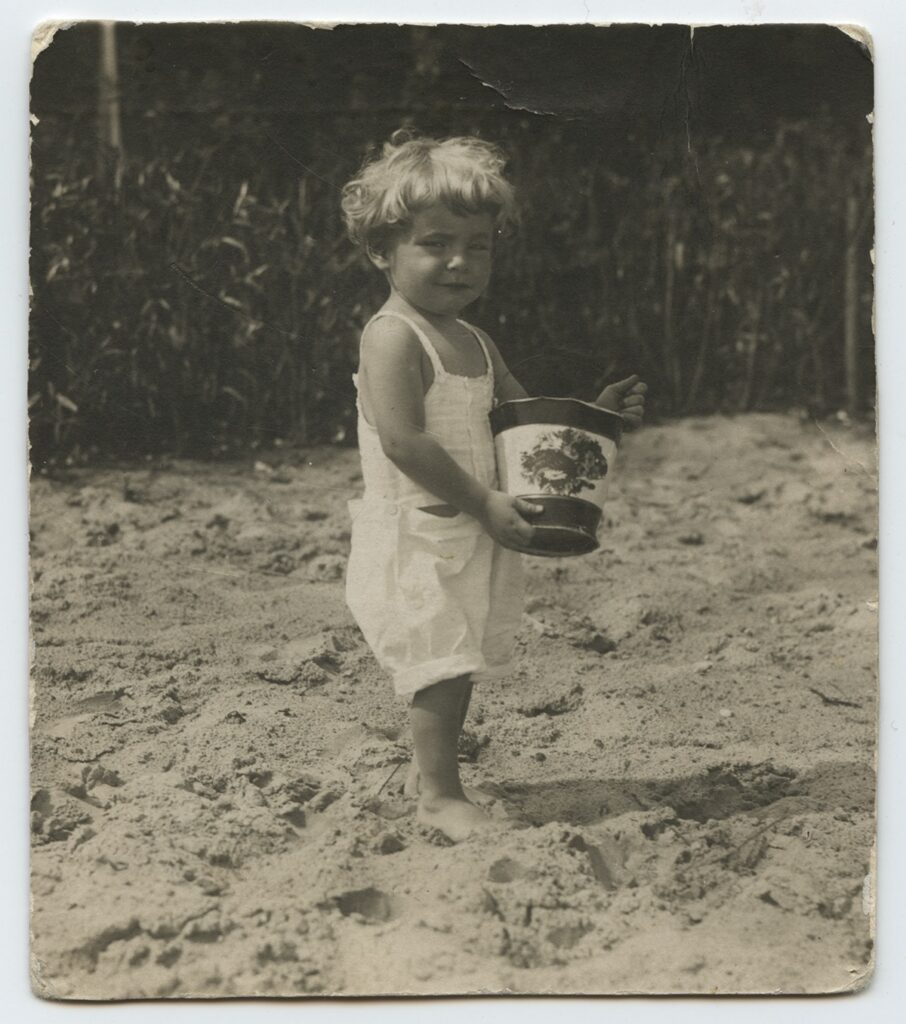
A young Ryszard Ores on holiday in Sopot before the war
When the Nazis removed Jewish pupils from schools, Ores managed to complete a nursing course in a hospital in Podgórze. That allowed him later to work as a paramedic in the ghetto.
“There was a constant shortage of medicine. Although the treatment methods and the professional care didn’t differ from other hospitals, the situation of patients was incomparable,” recalled Ores in 2003 during a professional visit to Poland for a meeting of the Kraków Doctors Association.
“Every now and then an SS soldier would rush into the room and would shoot a patient or demand that we took him outside and then kill the patient on the stretchers.”
After the war, Ores stayed in touch with his Kraków friends from the medical world. One was Julian Aleksandrowicz, later a renowned haematologist, who during the war ran a hospital in the ghetto in which Ores worked. Aleksandrowicz rescued him from being transported to a death camp.
In a documentary recorded on one of his postwar visits to Kraków, Ores recalls how he was saved by Aleksandrowicz: “In 1942 I came with my mother and sister to the Jewish social welfare building waiting for a so-called ‘blue card’ – a resident’s permit for the ghetto. The Gestapo officers denied the card to my mother and sister but said I could get one if I separated from them. I refused.”
His mother and sister were taken to the courtyard, and were later murdered in a death camp, but Ores was kept behind. He could not leave the building as it was guarded by SS officers. At that point, he saw Aleksandrowicz through a window. “He opened the window and tossed a white doctor’s uniform, then he shouted ‘Doctor! Doctor!’ and the Gestapo pushed me out onto the street.”
Ores was the only member of his immediate family to survive the war.
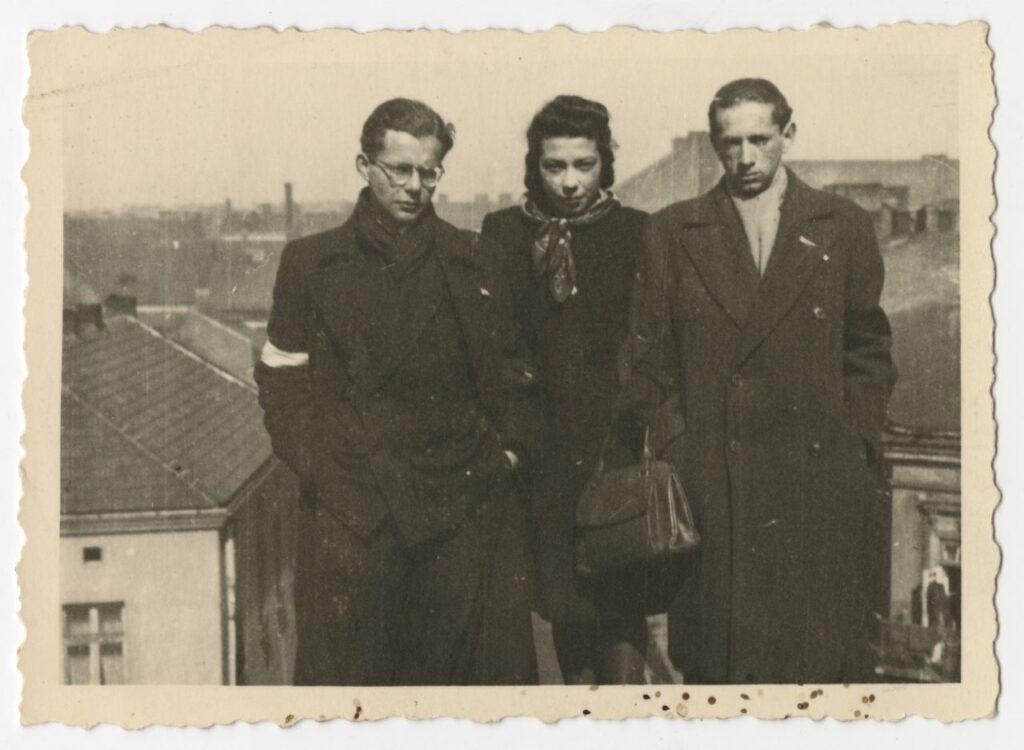
Ryszard Ores with friends in the Kraków ghetto, circa 1941
Another whom Ores remained in contact with was Tadeusz Pankiewicz, a Pole who ran the famous “Under the Eagle” pharmacy in Kraków’s Podgórze district, which, during the German occupation, was turned into the Jewish ghetto.
The place served as a contact point between those living inside the ghetto walls and the outside world, which allowed Pankiewicz to rescue numerous Jews. For his heroism, he was recognised by Israel as a Righteous Among the Nations.
It was the Jews who were at least partially assimilated, like Ores, who had a greater chance of surviving the Holocaust, thanks in part to their contact with non-Jewish Poles. This also meant that they often retained a sense of connection with the country even if they fled it during or after the war.
“The nature of survivors’ contact with postwar Poland depended greatly on their situation and social status before the war: to what extent their families were assimilated, and if they in the first place considered themselves Poles or Jews,” Sebastian Rejak, director of American Jewish Committee (AJC) Central Europe, told Notes from Poland.
“It was for some of those that this feeling of homeliness, this conviction: ‘This is my country’ and ‘I want to be part of it’, played a role after the war.”
“There have been numerous survivors who have come to visit Poland at some point. However, what makes Ores’s story exceptional is that he repeatedly managed to get through the Iron Curtain and visited Poland already during the communist era,” says Edyta Gawron, a Holocaust historian and assistant professor at the Jagiellonian University’s Institute of Jewish Studies.
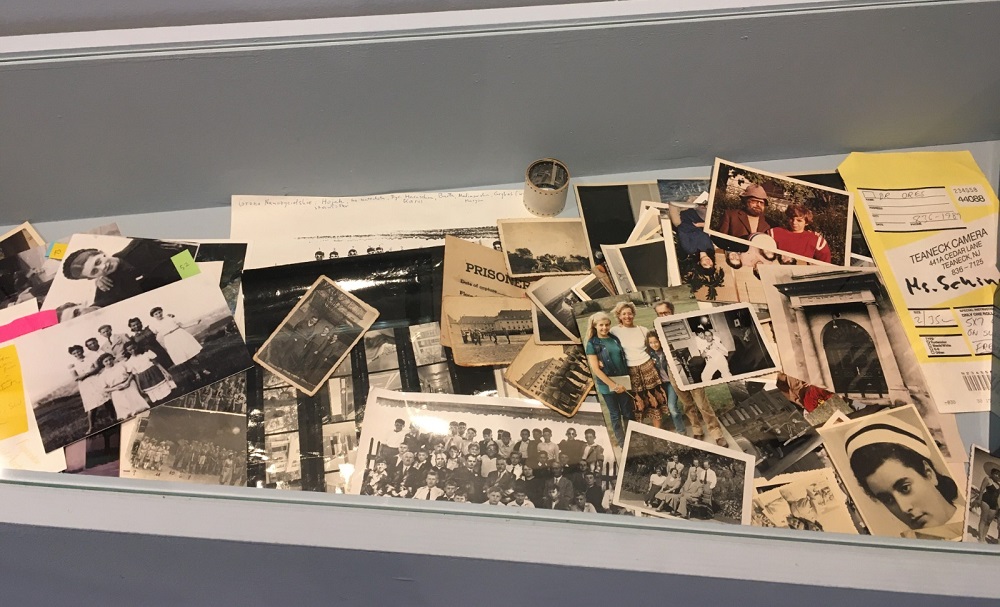
Part of the exhibition at the Galicia Jewish Museum (photo: Agnieszka Wądołowska)
When Kraków’s ghetto was liquidated in 1943, Ores was marched to the forced labour camp of Plaszow, and from there to a number of concentration camps on German territory, where he witnessed all the horrors of the Holocaust.
It was from Dachau that Ores was liberated by the US army in 1945. By then, he weighed just over 30 kilos (66 lbs). Afterwards, he was treated in Davos, Switzerland, studied medicine in Bern, and then settled in the US. In the 1990s, he was asked to be a consultant on Steven Spielberg’s Schindler’s List, which was filmed in Kraków and presented some of the places and atrocities that he had lived through during the war.
His daughter Michelle recalled telephoning her father after she had seen the film for the first time. “How are you doing?” she asked him breathlessly. “That was nothing,” he responded. “That didn’t even come close.”
Ores himself was a keen photographer and filmmaker. Even before WWII, he started to record all that was happening around him. A whole collection of his black-and-white photographs survived in a glass pickle jar that he buried near a rock in the Plaszow concentration camp during the war.
There are different versions of how the jar was retrieved after the war. Some accounts say that it was a nurse, Irena Keller, his friend and later his wife, who managed to find it; others that he did it himself. In any case, they proved to be his personal Ringelblum archive.
In some of those pictures – capturing everyday life just before the outbreak of WWII and some later in the ghetto – young, happy people, his family and friends, smile, unaware of what was soon to come. For many of them, this was the last evidence of their existence.
“I remember I was at his house…and while he didn’t remember his grandchildren’s names, he could still name everyone in those photos and could tell what happened to them and if they survived the war,” recalls Michelle.
Maybe also because of those people he lost in Poland, Ores was determined to maintain his relationship with this corner of the world. He visited both the symbolic places – the former ghetto, Plaszow and Kraków’s Jewish quarter, Kazimierz – but also those that he remembered from his life before the war. He would visit Zakopane and other mountain resorts.
“We would go to Europe every two or three years by boat…My parents had nothing against the culture or the people. [What happened during the war] was an incident, it was done by certain people, but that doesn’t carry across all of Germany or all of Poland,” recalls his other daughter, Pauline.
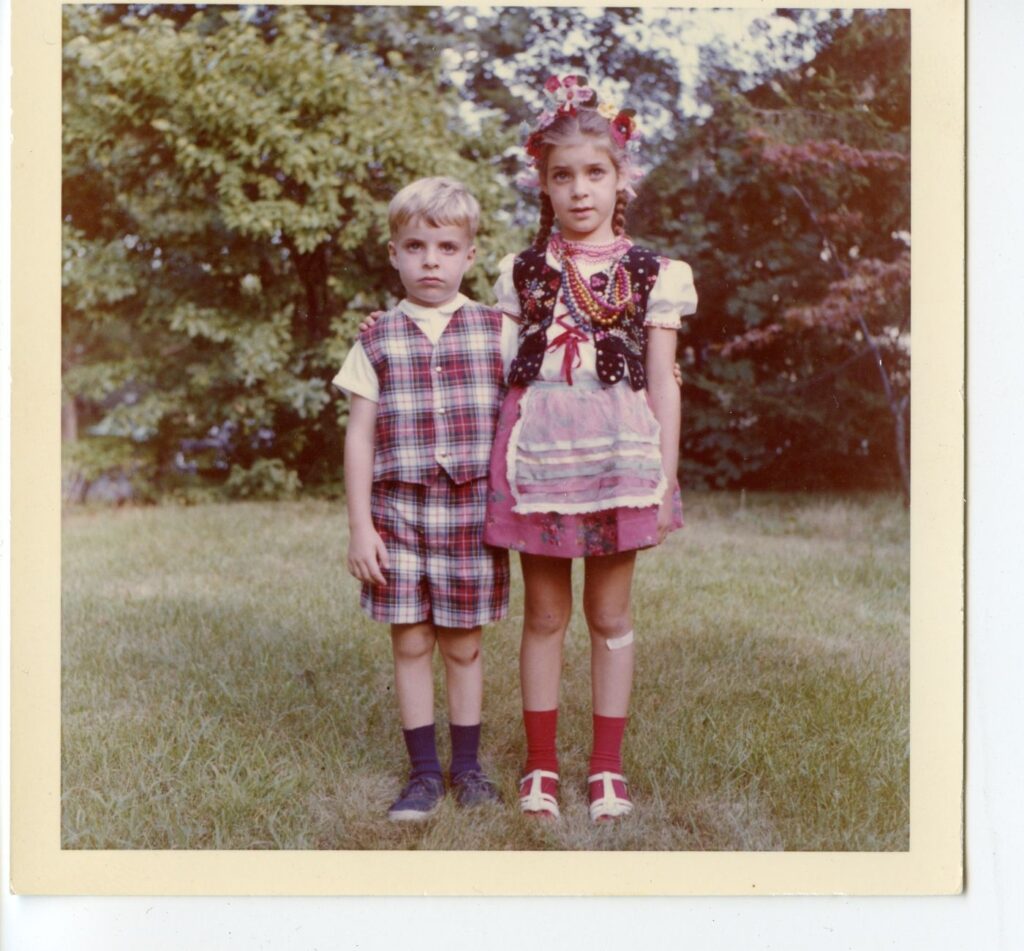
Ryszard Ores’s children David and Pauline in traditional Cracovian costume, USA, 1960s
“In a sense, it’s a most natural decision to go back home. Though the possibility to perceive Poland as ‘home’ was impaired for many by the war itself and then by the wave of post-war antisemitism. Some of those who returned just after the war were not welcomed, but met with surprise or disappointment,” notes Rejak.
Yet Ores not only kept coming back, but also raised funds to support both Kraków’s medical institutions and those cultivating Jewish heritage and culture. For his merits he was awarded national orders by Polish presidents Lech Wałęsa and Aleksander Kwaśniewski.
He also wanted his family to be able to sustain the ties with both Polish history and Poland’s modern community. This was the case among some Holocaust survivors, who “felt a need to pass on at least some crumbs of their memories and life stories to the next generations,” says Gawron.
However, in many cases the opposite happened, with survivors with traumatic experiences from prewar or wartime Poland “openly forbidding their children to ‘ever go back to that place’”, notes Rejak. That meant many in the second and third generation “only hearing of hostile Poland and not wanting to have anything to do with it”.
The different relationships Ores’s family members formed and preserved over the years with his first homeland encompass the whole complexity of this link between the descendants of Holocaust survivors and the country of their roots.
Ryszard’s grandson Adam moved to Poland a few years ago, first to Kraków and then to Warsaw. Adam is involved in a number of initiatives focusing on Jewish culture and heritage as well as other forms of activism. Similarly, Adam’s mother, Michelle is engaged in the life of the Jewish community in Poland.
Ores’s son, David, forged a very different relationship and openly admits that he does not consider Poland to be of special importance to him. “To me going to Poland is going to the graveyard of all the dead relatives with the consciousness of what happened there…Genocides kill generations.”
Yet Ryszard Ores considered himself a Pole till the end of his life. His daughter Nina recalled that when he suffered a heart attack, he told her that “he would like his ashes to be brought to the place where his mother and sister died.”
The exhibition “Sweet Home Sweet: A Story of Survival, Memory and Returns” opened yesterday at the Galicia Jewish Museum in Kraków.
All images unless stated: Ores family archive
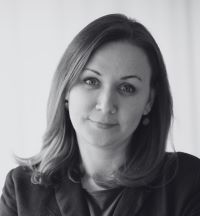
Agnieszka Wądołowska is deputy editor-in-chief of Notes from Poland. She is a member of the European Press Prize’s preparatory committee. She was 2022 Fellow at the Entrepreneurial Journalism Creators Program at City University of New York. In 2024, she graduated from the Advanced Leadership Programme for Top Talents at the Center for Leadership. She has previously contributed to Gazeta Wyborcza, Wysokie Obcasy and Duży Format.
